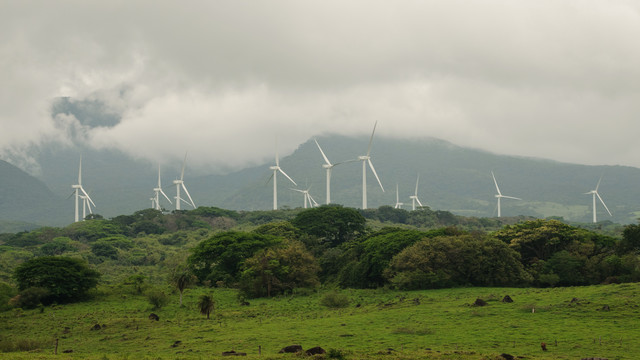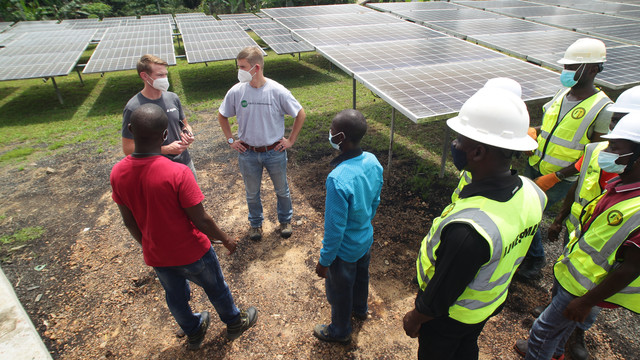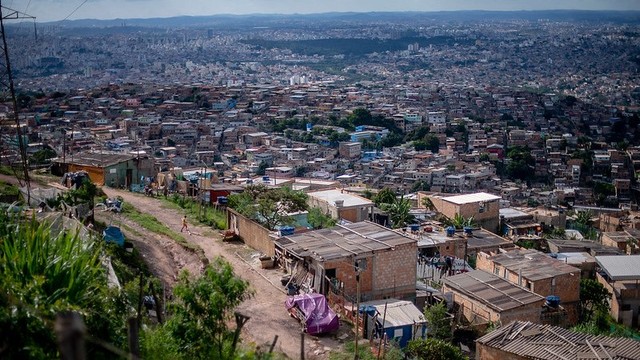Global goals, global audience – how well did we score?
IIED's animation about the Sustainable Development Goals took us into new territory – but what were we trying to achieve?

"Hello world. How would you like to be changed?"
These are the first words in an animation – available above and on our YouTube channel – that we created three months ago to raise awareness about the Sustainable Development Goals (SDGs) and the potential of the new development agenda.
'Bringing the SDGs to life: real change for real people' covered all 17 SDGs in just three minutes and, thanks to all the people who have shared it, has now been viewed thousands of times across the world, generating widespread praise.
But what have the animations stars – Fernando, Tina, Rani, Amaal and Eugenie – taught the world? And how did their message, that world leaders should be urged not only to sign up to this agenda, but also to make these aspirations a reality, reach a global audience?
Taking a different approach
Amid a growing critique that the 17 SDGs were too long and complex to be communicated to a general audience, we wanted to address this challenge head on. We wanted to show why all the SDGs were needed – to address problems in all countries – but also show that they could be simply communicated.
Opting to use an animation reflected a significantly different approach for IIED. Rather than highlighting specific areas of our own expertise or speaking to an identified audience of policymakers, we focused on highlighting the issues in a format that was as accessible as possible to a wider audience, in a way that reflects our understanding and knowledge.
Bringing the goals to life
The development of the animation was led by our chief economist, Paul Steele, and the communications team, with input from our Research Strategy Team. We commissioned Hands Up, which had recently worked on another project with us to promote accountability in agricultural investment chains.
One of the first challenges was how to represent the universal nature of the SDGs and the range of issues covered by the 17 goals that embrace all aspects of development and apply to all countries. And to do it all in around three minutes – which we felt was vital to keep it accessible.
We quickly realised that a list of all the goals was not going to work and that starting from the Millennium Development Goals (MDGs) was too much back-story for a three-minute film. Instead, we dived straight into the SDGs, and decided to focus on the dreams of five characters around the world and how the SDGs would impact on their lives.
As IIED director of Communications, Liz Carlile, said: "We wanted to show that although the SDGs are complex and relate to many different areas of policy, they also speak to people's dreams of a better future."
Ideas that failed to make the cut
Although we had just six weeks to produce the animation, there were wide-ranging discussions at the first script stage and again when the visuals and animation began.
One early suggestion was to portray organisations such as the World Bank and International Monetary Fund as players on a football team, giving the animation greater global resonance, and allowing a neat pun on 'goals'. In the end we decided that this was one metaphor too many.
While we decided not to cover the MDGs, we did want to highlight how the SDGs were different from the MDGs – in particular their universal nature (applying to all countries) and their emphasis on all aspects of sustainable development, especially the environment.
For universality, we chose characters from different countries, ethnicities and genders – ranging from Somalia to the United States. We also made the flags and voices stating "yes" as diverse as possible. To emphasise the environmental focus, we included access to water in India, marine pollution in Somalia and food waste in the UK.
The following images show the first storyboards developed by Hands Up (click on the images to expand them).
Each character was selected to represent different issues and highlight different goals. Tina was devised to illustrate the issues of sustainable consumption and production, and global partnerships.
She ended up as a vegetable buyer for a UK supermarket, but was almost a scientist working on solar technologies with Indian companies or a travel agent arranging tours for British tourists to the rainforest.
The script also prompted debate. Could we use a child's voice and avoid sounding patronising? Our fears on this were assuaged when we heard the voiceover performed by a child actor in Cairo.
And of course we thought carefully about the backing music before we chose Soar Beyond the Clouds, by Chris Haigh (these were our shortlisted options).
Revised and updated
The animation was launched at the 20th Poverty Environment Partnership (PEP) meeting at the end of May.
The reaction was positive, but we also received feedback that the call to action to hold leaders to account could have been stronger – so we revised the ending.
By that stage of course the animation was out there and had been viewed thousands of times on YouTube. This posed a problem, because it's not possible to simply replace a video without losing valuable information for monitoring and evaluation. So we uploaded our revised animation as a new video, and edited the previous version to direct people towards the updated film.
The animation has been widely shared on social media; and had been viewed more than 6,000 times on YouTube by mid-September, with links from other such networks such as Twitter, Facebook and LinkedIn.
very interesting contribution of @IIED to popularize #SDGs https://t.co/iZO2c28ana
— Lenni Montiel UNDESA (@LenniMontiel) September 3, 2015
One of our objectives was to use as little text as possible to facilitate easy translation. This has paid off with requests received to do voiceovers in other languages ahead of the United Nations General Assembly in late September, including from the UN Association of Iceland, which wants to use the animation in schools, and there is already a version with Korean subtitles.
To make it easier to share, we have reduced the size of the animation to 32MB and made it available to download, with tips on how to share and embed in other websites.
We hope that the animation has led to greater awareness and triggered conversations. We'd love to hear about where you have shared it – and to hear your views. Tell us in the comments section below.
Matthew Wright (matthew.wright@iied.org) is IIED's web planning and content manager.







